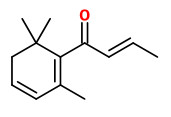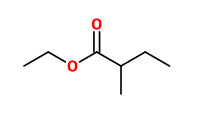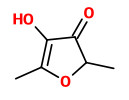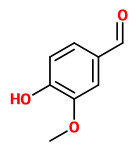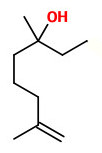Nephelium lappaceum L. - Sapindaceae - rambutan, rhambutan, Rambutan
Evergreen tree, 12-20m high, native to Indonesia and Malaysia. As a member of the Sapindaceae family it is closely related to several other edible tropical fruits including the lychee (Litchi chinensis), longan (Dimocarpus longan), pulasan (Nephelium ramboutan-ake), and mamoncillo (Melicoccus bijugatus).
„The fruit is a round to oval single-seeded berry, 3-6 cm (rarely to 8 cm) long and 3-4 cm broad, borne in a loose pendant cluster of 10-20 together. The leathery skin is reddish (rarely orange or yellow), and covered with fleshy pliable spines, hence the name, which means 'hairs'. The fruit flesh, which is actually the aril, is translucent, whitish or very pale pink, with a sweet, mildly acidic flavor very reminiscent of grapes.“ http://en.wikipedia.org/wiki/Rambutan
„The 20 most potent odorants [from the red-skinned cultivar of rambutan, Jitlee] included β-damascenone, (E)-4,5-epoxy-(E)-2-decenal, vanillin, (E)-2-nonenal, phenylacetic acid, cinnamic acid, unknown 1 (sweaty), ethyl 2-methylbutyrate, and δ-decalactone.“
On the basis of calculated odor activity values, β-damascenone (OAV 226), ethyl 2-methylbutyrate (OAV 151), 2,6-nonadienal (OAV 121), (E)-2-nonenal (OAV 87), nonanal (OAV 62), and furaneol (OAV 3) were determined to be the main contributors to rambutan fruit aroma.
[Characterization of volatiles in rambutan fruit (Nephelium lappaceum L.)., Ong, P.K., Acree, T.E., Lavin, E.H., Journal of agricultural and food chemistry, 46(2), 1998, 611-615]
The major volatiles found by GC/FID contributed very little to the GC/O chromatogramm. Most potent odorants were ethyl 2-methylbutyrate, furaneol, m-cresol, guaiacol, nonanal, phenylethanol, heptanoic acid, maltol, (E/Z)-2-nonenal, phenylacetic acid, hydrocinnamic acid, (E)-4,5-epoxy-(E)-2-decenal, vanillin, β-damascenone, cinnamic acid, and δ-decalactone.
„…β-damascenone was the only carotenoid derived compound in rambutan above its odor threshold and it was not detectable in the GC/FID chromatogram.“
[Friedrich, Jane E., and Terry E. Acree. „Analyzing Carotenoid-Derived Aroma Compounds Using Gas Chromatography-Olfactometry.“, in: Winterhalter, Peter, and Russell L. Rouseff, eds. Carotenoid-derived aroma compounds. American Chemical Society, 2001, 67-74]
Of the ‘Rong-rien’ rambutan (Nephelium lappaceum L. var Rong-rien) fruit flesh volatiles, isocitronellol (alpha citronellol; 29%, floral, intense rose like, weak fruit aroma), 3-hydroxy-2-butanone (14%), 1-propene-1-thiol (12%), 4-tridecyl valerate (6%), 3-methyl-2-hexanal (6%), and pentanal (4%) were most abundant; δ-decalactone (3%), benzaldehyde (3%), acetaldehyde (2%), and pentyl acetate (1%) were also present.
[Postharvest survey of volatile compounds in five tropical fruits using headspace-solid phase microextraction (HS-SPME). Laohakunjit, N., Kerdchoechuen, O., Matta, F. B., Silva, J. L., Holmes, W. E., HortScience, Vol.42(2), 2007, 309-314]
http://hortsci.ashspublications.org/content/42/2/309.full.pdf+html
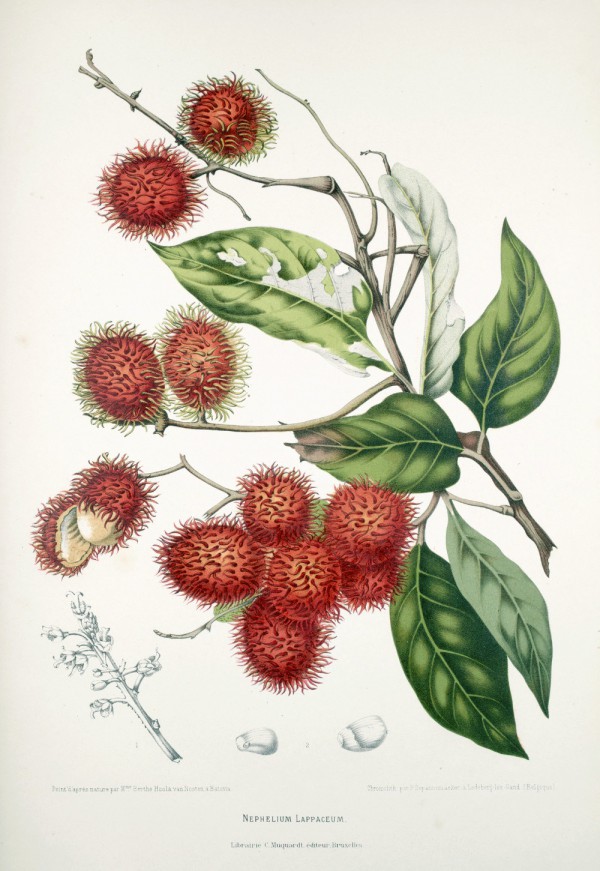
Hoola van Nooten, B., Fleurs, fruits et feuillages choisis de l’ille de Java: peints d’apres nature, t.7 (1880)
http://plantgenera.org/species.php?id_species=698117
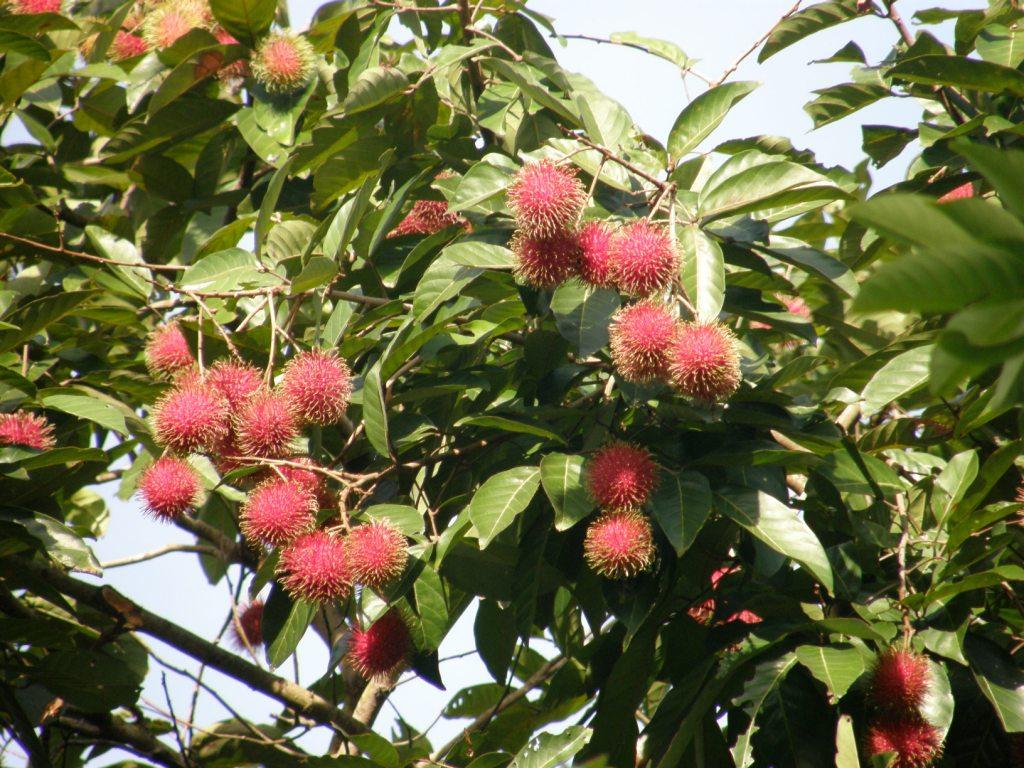
Rambutan fruits on a tree, Author: VoDeTan2 CC BY-SA 3.0 Wikimedia Commons
